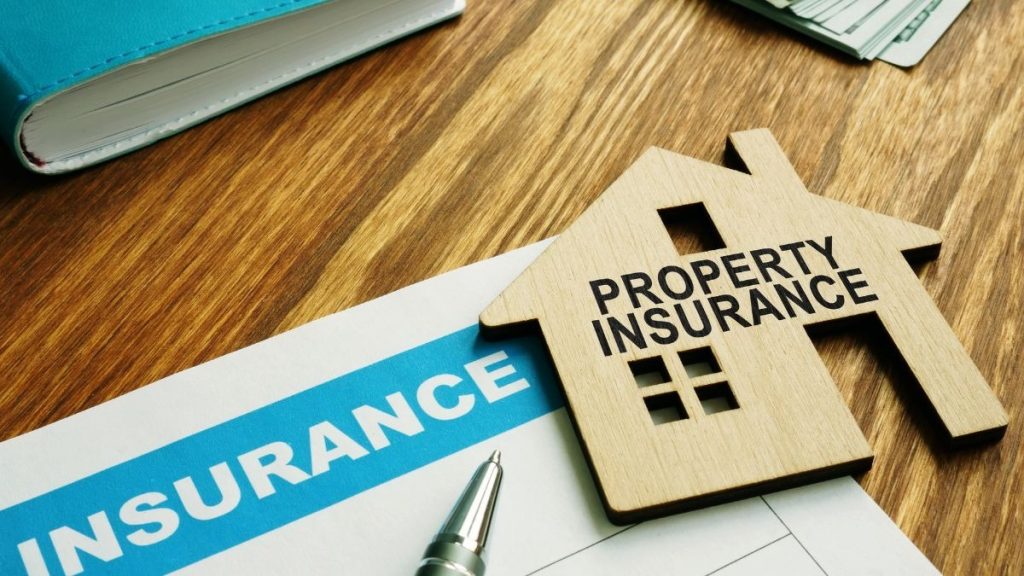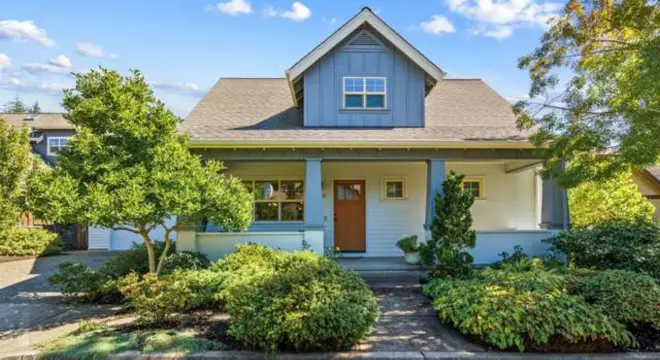What Homeowners Insurance Actually Covers: A Complete Guide
When I first bought my home, I’ll be honest—I didn’t think much about insurance beyond the basics. But after a neighbor’s house suffered a sudden fire, I realized just how fragile our sense of security can be. That’s when I started digging into homeowners insurance, and I want to walk you through it so you don’t face the same blind spots I did.
Homeowners insurance isn’t just a piece of paper; it’s your safety net. It protects your home, your belongings, and even your finances if something unexpected happens—whether it’s a storm, theft, or an accident on your property.
But here’s the catch: not all policies are created equal. Knowing what’s actually covered (and what isn’t) can make the difference between getting fully reimbursed or paying out of pocket.
In this article, I’ll break down the types of homeowners insurance, explain what each one covers, point out the gaps most people miss, and give you practical tips to choose a policy that truly protects you. By the end, you’ll understand your options clearly and be able to make informed choices without feeling overwhelmed.
Types of Homeowners Insurance Policies

When I first explored insurance options, I quickly realized there’s more than one type—and the differences can be huge for your coverage. According to House Logic, the main types are HO-1, HO-2, HO-3, HO-6, and HO-8. Here’s how I break them down so you can see which fits your home:
HO-1: Basic Coverage
This is the simplest policy, covering things like fire, lightning, windstorm, hail, riots, theft, and a few other perils. When I looked at HO-1 for my home, I realized many states don’t even allow this anymore—it’s mostly historical. You should know it’s limited and might leave you exposed to risks you care about.
HO-2: Upgraded Coverage:
HO-2 includes everything from HO-1, plus falling objects, ice/snow damage, plumbing or appliance leaks, electrical surges, glass breakage, and even abrupt structural collapse. When I switched to HO-2, I felt more confident because my policy now covered more realistic everyday risks that HO-1 would miss.
HO-3: Comprehensive Coverage
This is the one I recommend most people start with. It covers almost everything except a few exclusions like floods, earthquakes, and war. Think of it like a safety net that’s broad enough to cover nearly every common scenario—if zombies were a risk, HO-3 would even cover them because it only excludes what’s specifically listed!
HO-6: Condo/Co-op Coverage
If you live in a condo, this is your go-to. It’s like HO-2 but tailored for shared buildings—covering your unit, personal property, and liability.
HO-8: Older Homes
If your home is historic or has unique construction, HO-8 might be your best option. It covers the same perils as HO-1 but only pays repair or market value, not full replacement cost. When I insured my grandmother’s century-old home, HO-8 was perfect because rebuilding it exactly as it was would have been impossible.
Understanding these types prevents you from buying a policy that either under-protects or overcharges you. I know it can feel confusing, but once you match your home and risks to the right type, you gain real peace of mind.
When you’re buying your first home, it’s not just about selecting a property; understanding financial tools like the top 5 home loans every first-time buyer should know in 2025 can also influence how you approach insurance coverage.
What Homeowners Insurance Does Not Cover?
Here’s a hard truth I wish I knew sooner: no matter which policy you pick, you’re not protected against everything. For example, problems caused by poor maintenance—like mold or termite damage—usually aren’t covered.
Natural disasters like floods, earthquakes, hurricanes, mudslides, and sinkholes are often excluded unless you buy additional policies.
When I reviewed my policy, I realized things like sewer backups, sump pump failures, and ground movement from mining weren’t included either. And that’s common across most standard policies.
You have to be proactive if you live in high-risk areas—flood insurance or earthquake riders can fill some gaps, but some things remain uninsurable.
Knowing exclusions up front saves you from nasty surprises later. I want you to make choices that match your real-world risks, not just the policy brochure.
Additional Coverage Beyond the House
Insurance isn’t just about the walls and roof. When I checked my coverage, I noticed it also protects several extra things:
Outbuildings, Landscaping, Hardscaping
Sheds, barns, fences, and plants are often covered up to a percentage of your total policy—usually 10% for structures and 5% for plants. But remember, certain perils like wind might be excluded for these extras. I once assumed my garden was fully safe, only to learn otherwise.
Personal Belongings
Your belongings are usually covered both at home and sometimes when you’re out—like if your laptop is stolen at college. Replacement cost vs. cash value makes a huge difference here. I personally switched to replacement cost coverage for electronics and furniture because it meant I could replace items fully without stressing about depreciation.
Temporary Living Expenses
If your home becomes uninhabitable, insurance can cover hotel bills, meals, and other temporary expenses. When I had minor storm damage last year, it was a relief to know we could stay elsewhere without paying a fortune—though there are limits, so check your policy carefully.
Liability Coverage
Accidents happen, and liability coverage protects you if someone gets injured at your home, including dog bites or slips. I’ve had friends saved from big bills thanks to this part of their policy.
These extras can make a massive difference when disaster strikes. I want you to be fully aware so you’re not caught off guard.
For quick updates and practical tips on homeowners insurance, many readers find following relevant WhatsApp discussion groups helpful for real-time questions and insights.
Daily tips for a safer, better home – Click to join now!
How to Choose the Right Homeowners Insurance Policy?

When I chose my policy, I realized it’s not just about price—it’s about fit. You want a policy that matches:
- Your home type (single-family, condo, co-op)
- Your home’s age and construction
- Location and natural disaster risk
- Coverage limits, deductibles, and optional add-ons
I personally compared multiple providers, read the fine print, and even checked forums for real customer experiences. It helped me avoid policies that sounded good on paper but left gaps in practice.
Picking the right policy can save thousands of rupees and give you peace of mind. You shouldn’t feel trapped into paying for coverage you don’t need—or worse, find yourself underinsured when it matters most.
Whether you’re paying with a mortgage or buying a home with cash in today’s market, understanding how your insurance policy interacts with your financing method is key to avoiding surprises.
Tips to Optimize Your Homeowners Insurance
Here’s what I did to get the most from my policy without overspending:
- Bundle your home, auto, and other insurance for discounts
- Maintain good credit and a secure home to lower premiums
- Add riders for flood, earthquake, or valuable items if needed
- Review your coverage annually as your home or possessions change
I also made sure my insurance agent walked me through everything I didn’t understand—never assume coverage from just reading the brochure.
Smart tweaks can give you better coverage and save money. I want you to feel confident that your home is truly protected, without paying extra for coverage you don’t need.
Just like you need to avoid common pitfalls in real estate transactions, as outlined in our guide on 8 costly mistakes to avoid when buying and selling your home simultaneously, a few simple tweaks in your insurance approach can prevent major financial headaches later.
Key Takeaways – What You Should Remember

After going through all the types of homeowners insurance and what they cover (or don’t), here’s what I want you to keep in mind:
- Not all policies are created equal. HO-1 is basic, HO-3 is comprehensive, and HO-8 is for older homes. Match your policy to your home and lifestyle.
- Exclusions matter. Floods, earthquakes, sewer backups, and maintenance issues often aren’t covered. Don’t assume they are.
- Coverage isn’t just for the house itself. Your belongings, outbuildings, liability, and temporary living expenses can be included—make sure you know the limits.
- Read the fine print. Replacement cost vs. cash value, deductibles, and optional riders can make a huge financial difference.
- Review annually. Your home, possessions, and neighborhood risks can change over time. I check my policy every year and tweak coverage as needed.
Remembering these points ensures you’re not just buying insurance—you’re buying peace of mind. I want you to feel confident that your home and family are actually protected.
Expert Insights and Engagement
When I spoke to an insurance expert last year, they emphasized something I hadn’t considered: “Most homeowners overestimate their coverage but underestimate potential risks.” That stuck with me. Even HouseLogic and IRDAI reports highlight that many homeowners don’t fully understand what’s covered until they face a claim.
Here’s a practical takeaway: Take 30 minutes this week to review your policy. Check coverage types, exclusions, limits, and consider any add-ons you might need. I did this exercise and found one rider I had overlooked, saving myself thousands in potential risk.
Now I want to hear from you: Have you reviewed your homeowners insurance lately? Did you discover any coverage gaps? Drop a comment or share your experience—I promise other readers will find it helpful too.
Engaging with your policy and the community around it ensures you’re making informed choices, not just assuming protection. And sharing experiences can help others avoid mistakes I’ve seen far too many homeowners make.
If you want more insights on protecting your home and making smart financial decisions, check out our home buying section for guides and expert tips.
Disclaimer: The information in this article is for general educational purposes only and should not be considered legal or financial advice. Always read your policy documents carefully and consult a licensed insurance professional for personalized guidance. Coverage, limits, and exclusions may vary by provider and location.


